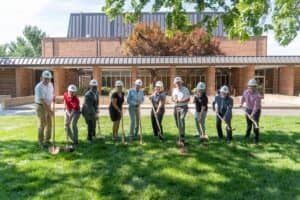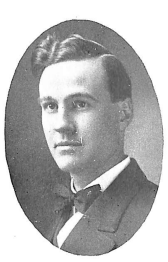A groundbreaking ceremony on June 29 celebrated the beginning of construction on the Riney Fine Arts Center.


A groundbreaking ceremony on June 29 celebrated the beginning of construction on the Riney Fine Arts Center.
Albert Sickner was chosen by the university’s board of directors to organize the music program at Friends. He created a curriculum that would provide students with the proficiencies needed to be competent music participants and performers. He was responsible for organizing the Friends University Chorus, the Women’s Glee Club and..Read More

Lucy Francisco became the head of the music department. She expanded the music program to attract the general student in addition to music degree-seeking students. Under Francisco, the University Chorus focused their performances on selections from oratorios, operas, and other works of classical merit. The Glee Clubs, contrastingly, performed show..Read More

The Women’s Glee Club embarked on their first tour through Kansas and Oklahoma while the men took to the rails and toured western Kansas. Due to the increasing popularity of these ensembles, interest in the University Choir decreased and the chorus was discontinued.

In 1914, Lucius Ades took over the music department. During this time, enrollment in music courses and performing ensembles increased.

By 1914, the two Glee Clubs were well-established as entertaining touring ensembles. Students would help organize the annual tours and concerts which featured a mix of choral works and popular tunes, often interspersed with dramatic readings, elaborate costumes, and intricate staging. The tours were an effective recruiting tool that sparked..Read More

While Glee Club tours had been separate for the men’s and women’s ensembles up till this point, department chair, Lucius Ades planned a combined tour that featured performances of Gilbert and Sullivan’s Mikado. The combined group performed the opera in five towns, carting along bulky lighting equipment, set pieces and..Read More

Roy Campbell, new head of the Friends University Music Department, combined the Men’s and Women’s Glee Clubs, following a national trend among universities during the 1920s. Instead of performing popular music, Campbell took cues from university a cappella choirs, leading the Singing Quakers to perform sacred music for memory in..Read More
Roy Campbell planned a spring tour for the entire music department and a final “Home Concert” in Alumni Auditorium following the tour.

For the first time, the name “Singing Quakers” appeared in the Home Concert program: The Singing Quakers: The Friends University Musical. It was listed again in the Friends University Catalogue under the subheading “Musical Organizations” in 1929.